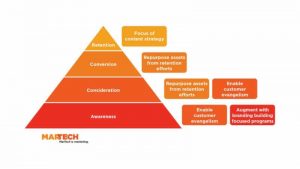At CyberGrants, we get to work with the best of the best. Our clients, who include over half of the F100 and many F500, gave over $ 6.5 billion last year. When you get to witness the giving programs of companies like Bank of America, Disney, and Southwest Airlines, you learn a thing or two about what works. While we spend a lot of time talking about the benefits of employee giving, sometimes we don’t dive quite deeply enough into the best practices of these amazing companies.
Did You Know?
CSR practices do more than make your employees happier, your business more competitive in hiring and solidify your corporate values. CSR initiatives can also raise market value by 4-6%, increase revenues by up to 20% and decrease staff turnover rates by up to 50%*. (Source: Project ROI)
*in a publicly traded company
So we decided to pull together the habits of companies both big and small, who have supercharged their workplace giving programs and created employee engagement and community impact. If you want to find out how to create a best-in-class workplace giving program, these 7 ideas will make it happen in 2018.
1. Going Beyond Exec Buy-In
If you’ve been in the CSR game for longer than a month, you know getting a yes from the top brass is integral to creating a best-in-class workplace giving program. But while it’s wonderful to get your higher-ups to buy-in, truly great companies get them to believe… to commit. And that starts with you.
Statistics like those above can go a long way toward helping your executive team to understand just how important your CSR initiatives are to the company’s success overall. If you want to build your CSR program from a half-hearted initiative into an impactful powerhouse, learn to tick off the benefits on your fingers fast. Employee engagement, great hiring success, unified values (especially in a global company), branding, altruism, community impact, increased inspiration, team building… the list can and does go on. Spread the word!
2. Use the Force… just kidding
Employees, managers, and especially the C-suite, all HATE being coerced into doing something. So when you force people to participate in your programs without sharing the underlying goals and values driving it, you’re setting yourself and your workplace giving program up for failure. The companies who have stellar workplace giving programs implemented stress the importance of having conversations with employees at every level of the organization, and being transparent about the kind of workplace you envision for the future.
The same concept should be applied to HOW people are encouraged to give and WHAT they are encouraged to give. If your employees only hear from your team when it’s time to give money to hit a goal, you’re doing it wrong. Instead, make sure communication is year-round and employees have options of how they can participate, whether giving money, volunteering time or even helping to spread the word.
Different groups will see more impact based on different giving options. For example, the single mom in the accounting department may not have the budget to give $ 100 but would happily bring her teenage son to assist in a garden planting project. At the same time, the CIO could easily drop $ 150 but her impact would be felt and seen much more if she showed up to the pajama drive in a onesie.
3. Offer Powerful Choices
Your employees have causes that are meaningful to them as well. Finding alignment between corporate values and causes is not always easy but it’s worth it to lend support to those you can and try to find common ground in giving. This allows you to create a culture of giving in your organization and is far more meaningful to your employees than simply dictating where they can and cannot give. And it’s more effective to success, say advocates inside companies who have stellar workplace giving programs, with employees 5x more likely to donate when programs are aligned to their values and corporate values.
4. Be as “in the moment” as Possible
Disaster strikes and when it does, best-in-class companies respond. Make your workplace giving program “in-the-moment” by quickly creating campaigns when something terrible happens in the country or across the world. One way to do this is to have monetary or matching giving campaigns set up ahead of time to deploy after changing a few details. Work out with executives what your match will be or if you want to give money, time, or supplies. Make sure that large, well-known and vetted charities are already in your database when disaster strikes.
5. Deploy a Channel Strategy
Most of the most well-known brands don’t just advertise on one medium and neither should you. If you’ve been relying on half-hearted emails and bulletin board flyers, you’re probably not doing very well. You already know your employees consume information in different ways, so start engaging them with branded sites, donation trackers, internal messaging, and interactive content. Your employees use Spotify, Snapchat and Netflix… they’re not interested in a system that is arduous, time-consuming and boring.
What does that mean for you? Just that you need to use multiple channels to reach your audience. Plus, if you’re still relying on file cabinets, excel spreadsheets and a walled garden, STOP! There are options that allow you to create an online experience for your employees, customize their accounts, allow them interaction with their employees and simple social media integration to spread the word!
6. Put Up or Shut Up
When you match, your employees give more. They just do! Every dollar increase you put on your match cap, creates 25 cents in more donations. If you watch, your employees are 2 times more likely to match! Your employees see you as a partner in philanthropy and get excited about the power of your collective gifts.
Best-in-class CSR programs offer a match to supercharge their growth. But if you do implement matching, make it well-known every time you build out a campaign. Communicate to your employees how important their gifts are, because through your matching program, they are multiplied! Make it dead simple for your employee to contribute and for them to see the effect of their matched donation.
- Make sure you allow employees to access both matched, company-supported causes and designate a match fund for those the employee chooses himself.
- Give each employee parameters. Matching can go awry when no support system is set up in advance. Again, communicate with employees what that match cap is. Not only will it motivate them to donate, they will feel individually singled out in giving efforts and that can increase engagement.
- Create a “tiered-matching” system by allocating a higher percentage match to company-selected organizations to encourage employees to research and learn more about the charities you’ve picked (hopefully in accordance with your corporate values).
- Your business is not an island. You may have partners, clients, service providers and board members who may consider matching donations as well. Leave no stone unturned when looking to multiply your donation.
- Make it simple. Some companies require receipt and year-end collection of documents. Put plainly, this is lame. Make it simpler for employees to make their donations count and they will donate more.
7. Money Makes the World Go Round
Except when it doesn’t. While most organizations are in need of funds to spend at their discretion to meet their charitable objectives, sometimes time is just as valuable, if not more so. And you can make it easier for employees to donate their time by giving them time to donate. Forcing employees to use vacation or PTO to better their communities is no way to supercharge your workplace giving program. But how do you BOOST volunteerism in your organization?
- Give your employees lots of options. If you have one opportunity a year and Brenda from marketing missed it, she’s a lot less likely to remember to sign up next year.
- Make it simple to sign up. We’re living in a digital world and people want to sign up, add to calendar and be reminded of what they signed up for. Give your employees this kind of hand-holding and they’ll reward you with higher participation rates!
- Social cred reigns supreme. It’s in human nature to want to get a bit of credit when they volunteer. If you can make that happen and build a brand for your organization, you not only meet this need, you raise awareness for your chosen charity as well.
- Make tracking easy. For many busy employees, using up all 20 or 40 hours of volunteer time in one week or even month, is simply not possible. Allow employees to track their time via the one thing they always have on them, their mobile device.
- Follow up. Your doctor calls after tests and you should give your employees insight after a campaign. How can they measure their impact or know their part in that impact if reporting is vague, or worse non-existent? Send follow up emails with total hours worked, images of your charity, or anything else that will motivate them to sign up again next quarter.
(55)





